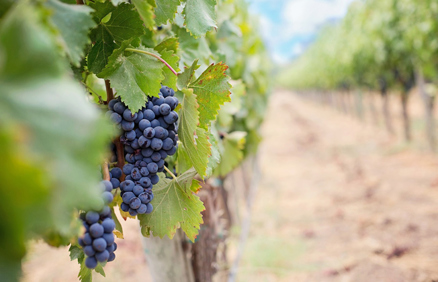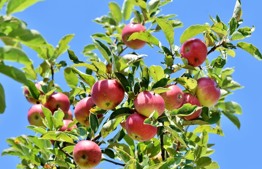Parashat Shoftim: Theft and Kil'aim

Hasagat gevul is tied to the Land of Israel, but also linked to kila'im; the similarities between the prohibitions can help us understand their spiritual common denominator. Also: about parsa'aot, the shemita year, and the holy city of Tiberius.
"לֹא תַסִּיג גְּבוּל רֵעֲךָ אֲשֶׁר גָּבְלוּ רִאשֹׁנִים, בְּנַחֲלָתְךָ אֲשֶׁר תִּנְחַל, בָּאָרֶץ אֲשֶׁר ה' אֱלֹקיךָ נֹתֵן לְךָ לְרִשְׁתָּהּ"
"You shall not move your countryman’s landmarks, set up by previous generations (rishonim), in the property that will be allotted to you in the land that the Hashem your G-d is giving you to possess." (Devarim 19:14)
A mitzvah tied to the Land of Israel?
The prohibition against theft certainly applies in Israel and abroad. This is why the explicit injunction in the verse above, from which it seems that the prohibition against hasagat gevul, moving landmarks between neighboring property, applies only in the "Land that Hashem your G-d is giving you to possess," seems very strange. Indeed, in the Sifri Chazal compare theft and hasagat gevul, concluding: "in the Land of Israel one transgresses two biblical prohibitions while abroad one biblical prohibition." It is very strange to find a law that belongs to the Shulchan Arusch, Choshen Mishpat, but applies exclusively in the Land of Israel. The Torah, though, speaks for itself. What's left for us to do is to try to understand why this is so.
The strange rishonim and the laws of kila'im
The strange nature of these verses does not stop here. The Gemara (Shabbat 84b), quotes the Mishna (Kila'im 3:1) about a vegetable patch 6 x 6 tefachim, in which it is possible to sow five different types of grains without transgressing the prohibition of kila'im (forbidden interplanting). The Gemara explains that the Sages understood that five different grains planted in a certain way in a patch of 6x6 tefachim do not draw their nourishment from one another, which is why this situation does not pose a problem of kila'im.
The Gemara could have stopped here, and then we would have assumed that here—like in other cases—a halacha leMoshe miSinai is Chazal's source for this halacha. Instead, the Gemara cites the Israeli Amora R' Chiya bar Abba, in the name of R' Yochanan, the leading Amora from the Land of Israel, on the verse above. R' Yochanan understands the verses as a reference to kila'im (according to the Tosafot, ibid.; it seems that Rashi's explanation adheres to the plain meaning of the text, viewing the prohibition as a reference to theft), explaining that the borders in question are not between neighboring fields, but rather between different types of produce.
The astonishing thing here, though, is the identity of the rishonim in our verse above. As long as we explain the verse according to its straightforward meaning, as a type of property theft in the Land of Israel, it seems the rishonim the verse would be referring to Elazar HaKohen, Yehoshua bin Nun, and the heads of the tribes that divided up the Land and allocated it to the Jewish People. From a term intimating former glory and splendor, it seems that this is what we would be expected to understand.
R' Yochanan, however, has a completely different approach on their identity. R' Yochanan maintains that rishonim is a reference to the original residents of the Land of Israel, "benei Se'ir HaChori," who settled in the Mt. Se'ir prior to the Israelite's arrival to the Land. This nation had phenomenal agronomic expertise; they could tell based on tasting and smelling the earth which type of soil was suitable for various crops, and knew that amount of nourishment each plant received from the soil.
Theft is form of kila'im
Chazal state: "Most [succumb to sin] with theft and a minority with illicit sexual relations" (Bava Batra 165a); that is, theft is one of the most widespread wrongdoing between people. From Chazal's statement we can understand that this sin is prevalent even among those with an otherwise clean record.
It seems that one of the reasons that people do not taking theft seriously is our failure to understand that the money in someone else's domain is their exclusive, G-d-given property that He decided to appropriate to this specific person. What follows is that attempting to seize this property by illicit means undermines G-d's natural order.
Were we to view using someone else's money like the prohibition of kil'aim, the amount of theft would most likely decrease significantly. While this is obviously true all over the world, in the Land of Israel this principle applies a hundred fold:
This is because in the Land of Israel, everything that a person owns is his permanently, for generations upon generations, which is not true abroad. Among the nations, the Jewish People do not have absolute property rights. For this reason, one can’t refer to this as an absolute moving of landmarks (hasagat gevul); [the property] is considered merely chattel, and one would only be transgressing "Do not steal" (Torah Temima).
We can now understand why the prohibition against hasagat gevul, unlike generic theft, applies in the Land of Israel alone.
The parsa'ot of Tiberius
,ר' יהודה אומר הפרסאות שביעית שלהן מוצאי שביעית, שהן עושות לשתי שנים. אמרו לו: הרי הן אצלך בטבריה"
"ואינן עושות אלא בנות שנתן
Rabbi Yehuda says: the parsa'ot – their Sabbatical year is the year after the Sabbatical year, since it takes them two years to produce. They replied to him: they can be found locally by you in Tiberias, and they produce during the same year alone (Tosefta Shevi'it 4:1).
Shemita post-shemita
While the shemita year actualizes the lofty concept of "the Land is G-d's," it has several laws that make life somewhat more complicated not only for the farmer but also for the private individual. When the kitchen counter is full of sacred kedushat shevi'it fruit peels, and the garden is crying out for attention beyond the minimum permitted during shemita, besides enjoying "Shabbat for Hashem" we also miss getting back to work.
The shemita year and its many halachot continue to accompany us for many months to come even after Rosh Hashana of the eight's year. The main reason for this is that for fruit, the date that determines their shevi'it sanctity is the fruit's blooming, that is, when the fruit begins to form. So if the fruit began its formation during the shemita year, even if it only ripens well after shemita is finished, the fruit will still be sacred with kedushat shevi'it. This is the reason why citrus fruit during shemita do not have kedushat shevi'it status (since they bloomed before the onset of shemita), but in the next winter they will be, since they bloomed during shemita).
The parasa'ot
The Mishna brings an extreme example of the benot shu'ach whose fruit, sacred with kedushat shevi'it, ripens only during the second year following shemita, since the ripening process takes three years. Benot shu'ach are identified as pine nuts or as Jerusalem pine (the Aleppo pine), which only ripen after three years. R' Yehuda cites an example of another species, parsa'aot (or parsiyot; probably kind of figs), which also has an extended (albeit less than the benot shu'ach) ripening period: two years, so its fruit would be ripe only the year following shemita. The Sages disagree with him, and maintain that the parsa'aot of Tiberius behave unlike the description of R' Yehuda, and its fruit ripens during the same year. We will not go into what exactly is the core of the dispute between R' Yehuda and the Sages, if it is a botanical dispute or if there is another hidden factor underlying it. Neither will we discuss that from the words of the Sages, we can understand that R' Yehuda was a resident of Tiberius (this is R' Yehuda bar Ilai, the sage mentioned most throughout the Mishna), while we are familiar with his residence in Usha, near Sharafam in the Western Lower Galilee, the location of the first station of the exiled Sanhedrin in the Galilee. We will, however, say a few words about Tiberius, one of the prominent cities in the Land of Israel for the last two thousand years.
The holy city of Tiberius
Tiberius was established in the first few years of the Common Era by Herod Antipater (Antipas), the son of Herod, who set down roots of his kingdom in the Galilee, naming the city after his benefactor, the Roman Caesar Tiberius. However, this city was situated on the ruins—or to be precise—the cemetery of the biblical city Raqqat, found in the portion of Naftali. The exact location of the biblical Raqqat is identified with Tel Raqqat, north of Tiberius. The problem of the cemetery follows Tiberius from its establishment; R' Shimon Bar Yochai is remembered as the one who "purified the city of Tiberius and made it clean" by planting lupines.
R' Yochanan of Tzippori moved to Tiberius, and it seems that he was followed by the main yeshiva in the Land of Israel and the Sanhedrin. Later on, the nesi'im moved there as well. The Jerusalemite Talmud was written in Tiberius, not – as its name would suggest—in Jerusalem, since no Jews lived there at that time (Roman law forbade this). Tiberius was the final station of the Sanhedrin before it was dispersed (and the residence of the last nasi, Raban Gamliel the Sixth). According to the tradition brought down by Chazal, the Sanhedrin will also be reinstated in Tiberius as well.
Even when Jewish residence in the Land of Israel was dwindling, in the early Muslim Era, Jewish Tiberius was in full bloom. During that time (the Geonic period), a family of nakdanim who were proficient in the Torah reading tradition gave us the Tiberian vocalization system (nikkud and ta'amei hamikra). This system of diacritics with punctuation and cantillation marks is the one we still use today. Also the Aleppo Codex, Keter Aram Tzova—the most veteran and authoritative source of Tanach—was written in Tiberius and R' Aharon bar Asher added diacritics there as well. Later on the scroll was exiled to Egypt (where it was used by the Rambam), from where it moved to Aleppo (Aram Tzova). Following the establishment of the State of Israel, it returned (most of it, at least) to Israel.
It was in Tiberius that there was an attempt to set up an autonomous Jewish state in the time of Dona Gracia and her nephew, Joao Micas (Joseph Nasi) during the 16th century. In the last quarter of the 18th century the "real First Aliya" of 300 disciples of the Maggid of Mezeritch arrived there, led by R' Menachem Mendel of Vitebsk. Prior to that time, the Jewish presence was renewed there by R' Chaim Abulafia, invited to continue the family's rabbinic tradition by the Arab governor, Dhaher al-Omar. R' Chaim Abulafia made Aliya at the age of 80 from Izmir, Turkey and restored the Jewish settlement in the city.
Tiberius was a mixed city, but following the War of Independence, nearly all its Arab inhabitants fled. Today, Tiberius is home to approximately 40,000 residents and is considered one of the major cities of Northern Israel.




